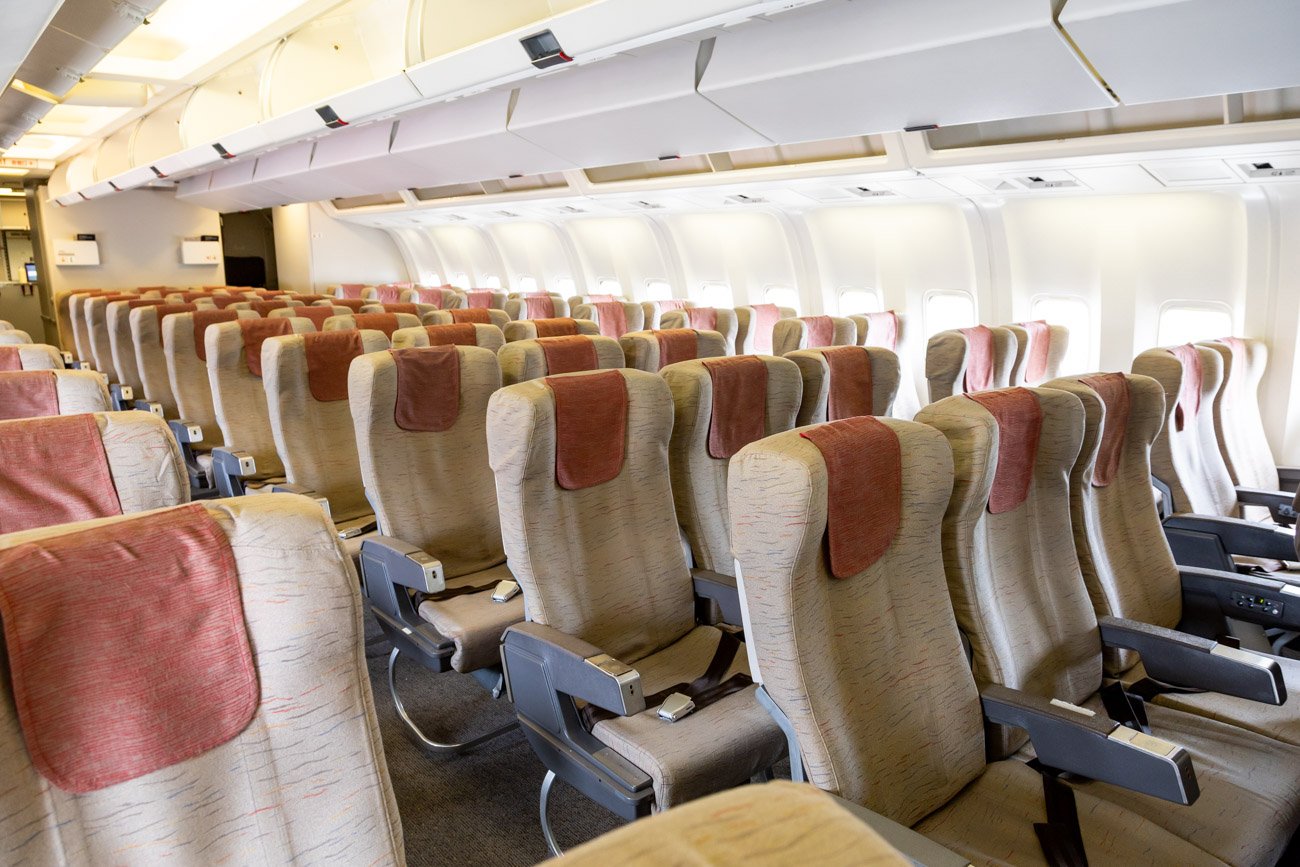
While the 767-300ER is, with nearly 600 airframes built, the most successful variant of Boeing 767, that cannot be said about the 767-300, of which only 104 airframes were built. With the considerably more capable ER version being introduced just a couple of years after the non-ER version, only a handful of airlines ever operated the original stretch of the 767.
Over time, all of those, including Delta Air Lines and JAL among others, except for one retired the type. The sole remaining operator of the 767-300 is Asiana Airlines which has one last airframe in its fleet.
Continue reading to learn more about the unique aircraft and to see what flying on it was like.

HL7528: Asiana’s and the World’s Only Remaining 767-300
Based on Airfleets.net data, Asiana Airlines operated 20 different Boeing 767-300 series airframes at one point or another. Today, it is left with two of those: a 767-300F (a freighter based on the 767-300ER) registered HL7507 and a 767-300 registered HL7528. The latter is the world’s last active airframe of the variant.
In the past, the airline operated eight more 767-300s, a few more freighters, as well as some 767-300ERs. Most of those were delivered directly to Asiana Airlines and thus include the airline’s customer code “8E” in their exact type designation (e.g. 767-38E).


The sole remaining 767-300 was delivered to Asiana Airlines at the end of September 1999.
It is equipped with a pair of GE CF6 engines, which are also used on the 747-400 among other types, and flies in an all-economy class configuration with 290 seats spread across 41 rows in a 2-3-2 layout and one row featuring only the three seats in the middle section.
The aircraft currently flies solely on the Seoul Gimpo – Jeju route, which happens to be the world’s busiest air route. The flights can be booked directly on Asiana Airlines’ website, generally for about $50-$70 one way. In the past, the aircraft also used to operate international flights, such as to Osaka Kansai.

OZ8940 from Jeju to Seoul Gimpo: Flying on the World’s Last 767-300
The idea to fly on the Asiana Airlines 767-300 was born when I was planning my January 2024 trip to South Korea. With a full day in Seoul to spare, I could not resist booking a quick roundtrip to Jeju to try Korean Air’s A220 and, more importantly, fly on the Asiana 767.
The flight was my seventh on the non-ER 767-300 overall and my first one on the type since December 2021 when I flew on Air Do Bear Do Hokkaido Jet’s farewell flight.
Boarding at Jeju Airport
After arriving at Jeju, I quickly made my way to the Asiana Lounge where I was hoping to get a photo of the 767’s arrival from Seoul. Unfortunately, I should have instead went to the KAL Lounge which offered a much better view as I found out later.
With that, I went through security (both of the lounges are landside) around 12:25PM. Once airside, I took a few photos of the 767 through large windows just past the security check and then headed to gate 7 where my flight was scheduled to depart from at 12:50PM.


Boarding started at 12:30PM with a passenger on a wheelchair followed by Star Alliance Gold members and others eligible for priority boarding a minute later.
While the economy class line was long (the flight was almost full), the priority line only had three passengers ahead of me.
Onboard, I greeted the cabin crew at the door and turned right into the second aisle. I headed down about three quarters of the aircraft before settling in my right-hand side window seat 40K.


Cabin and Seats
As mentioned earlier, the Asiana Airlines 767-300 is in a high-density all-economy configuration with 290 seats. With only one large cabin rather than multiple smaller cabins separated by bulkheads/galleys, the cabin felt rather spacious.
The well-padded seats, while showing their age, were considerably more comfortable than many of their more modern slimline counterparts. The legroom was decent too.



All in all, being onboard the Asiana 767-300 felt like traveling in time. Even more so than when I flew on the airline’s 747-400 due to the lack of personal entertainment screens on the 767.
Everything from the thickly padded seats, overhead bins, wall design, and window shape, all the way to the overhead panels and (sealed) ashtrays gave the cabin a retro vibe.





Departure from Jeju Airport
At 12:51PM, given that the announcement was only made in Korean, I assume we were welcomed onboard by the captain. A couple of minutes later, the cabin crew closed the aircraft doors in preparation for our departure.
The cabin crew also made a welcome announcement mentioning our expected flight time of 50 minutes. A screening of the safety video on the overhead screens followed.


We were pushed back eight minutes behind schedule, at 12:58. Shortly after, the two GE CF6 engines came to life, resulting in amazing sounds and vibrations.
A steep take-off at 1:16PM followed a few minutes of taxiing and holding short of runway 07.



In-Flight Service
Just six minutes after take off, the seatbelt signs were switched off and the in-flight service started.
With it being just a short sub-one-hour domestic flight, only drinks were offered (I had a cup of orange juice).

I spent the rest of the flight looking out of the window, soaking in the retro atmosphere onboard, and taking a short nap.
Unsurprisingly, there was no in-flight entertainment or onboard wi-fi.


Arrival at Seoul Gimpo
The end of the flight approached when, at 1:44PM, the pilots asked the cabin crew to prepare for landing. By that time, the seatbelt signs were already on as they were switched on due to turbulence about midway through the flight and stayed on since then.
As we approached Seoul, I was surprised to see snow on the ground, which wasn’t there just a couple of hours earlier when I took off bound for Jeju.
At 2:02PM, we landed on Gimpo Airport’s runway 32L.




We came to a full stop at our arrival gate at 2:07PM, seven minutes behind schedule. I waited for the cabin to empty, took a few photos, and then got off the aircraft happy to have logged another flight on a nowadays rare type.


Summary
Over the years, Asiana Airlines operated quite a few Boeing 767 aircraft including -300s, -300ERs, and freighters. Today, however, it is left with only two – one 767-300 and one freighter. The former is special given that it is the world’s last active non-ER 767.
While I do not have the same emotional attachment to the 767 as I do to the 747 or MD-11, over the last couple of years, the type has grown on me. As such, I am happy to have been able to fly on the last active 767-300. If all goes as planned, I should have one more chance to fly on it in June.





